A Logistical Marathon
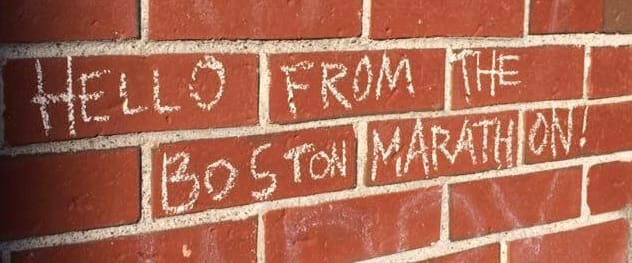
For a 30,000+ person foot race, the Boston Marathon requires a lot of vehicles. It’s a bit ironic when you think about it. I wish I was lying when I say that it seems like every state and local government vehicle is mobilized on Marathon Monday, but I’m not. All of the usual suspects are there: police cruisers, motorcycles, ambulances, buses, and whatever you call those mobile police station truck/van things. Then there’s the unexpected stuff: snowplow trucks, garbage trucks, side-by-side ATV’s, helicopters, a freakin’ blimp, F-35 Lightnings, a caravan of Hondas, countless pickup trucks, huge moving trucks, and no less than 25 bicycles. Yes, bicycles are official race vehicles at a marathon. It's strange, it's awesome, it's the best job ever, and it's my job.
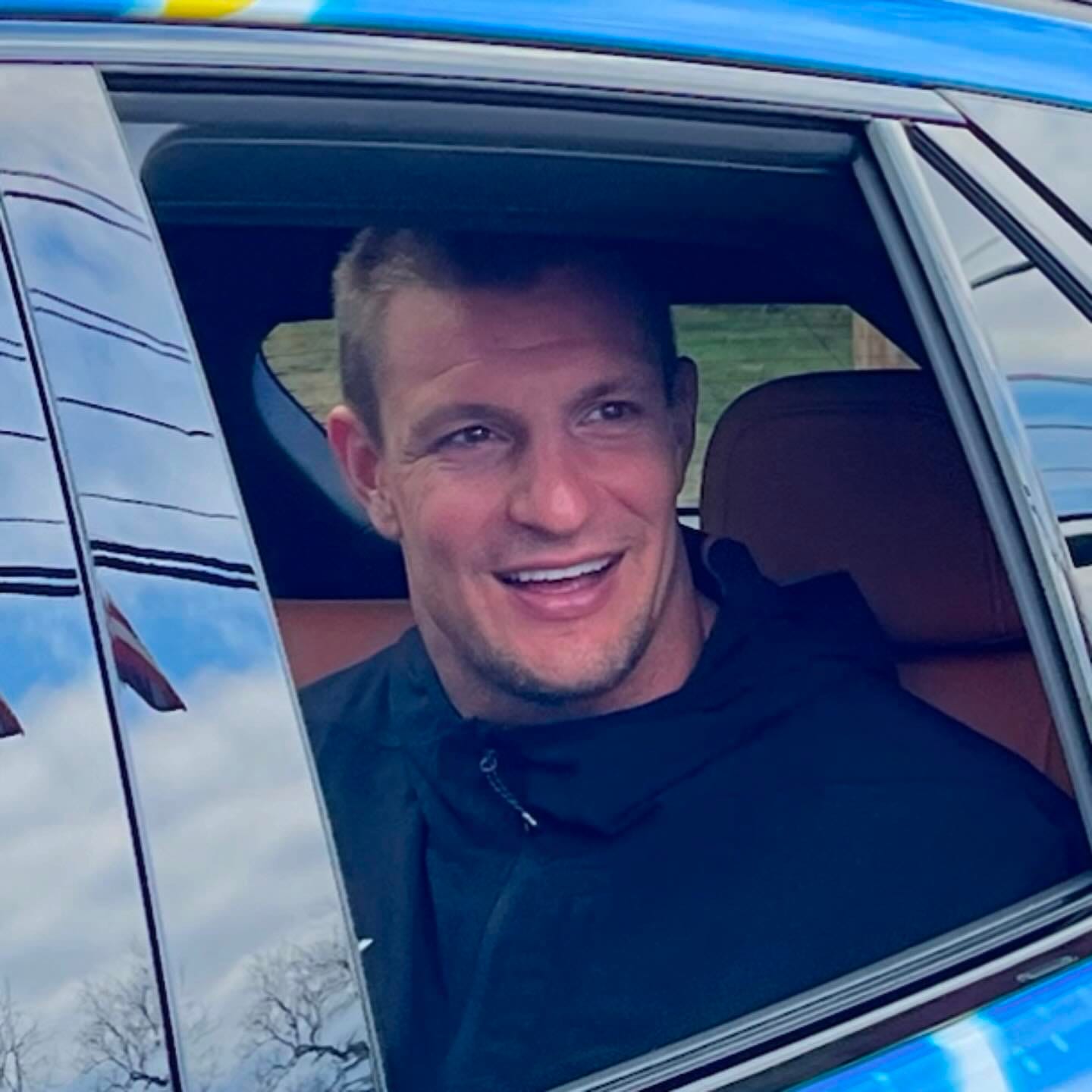
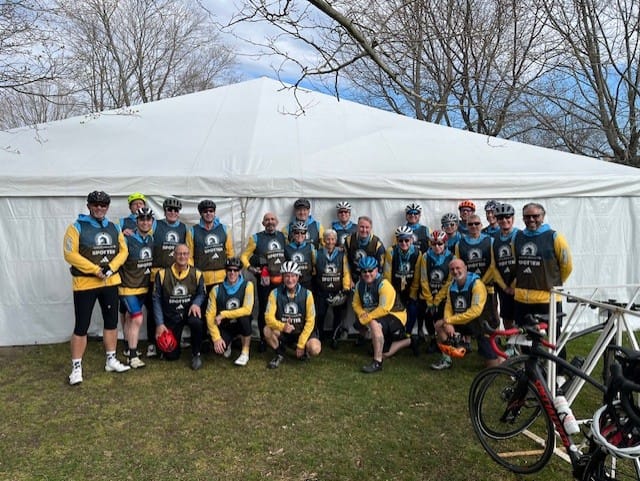
Rob Gronkowski was this year's Grand Marashal. As someone handed him a beer he said, "Gotta stay hydrated!". The Boston Marathon bike spotters is a pretty eclectic mix of awesome people!
Since 2010 I’ve been volunteering as a bike spotter at the Boston Marathon. How I got the job is a story for another day, but after knocking on a hidden door, saying the password, and doing the secret handshake I was in. I’m one of very few volunteers who see the whole course on race day and it’s totally worth burning a vacation day to experience. Besides the seemingly endless sea of spectators, I’m always in awe of the logistics of the race. I’ve heard rumors that it takes 18 months to plan a Boston Marathon, which means…*counts on fingers*…two are always being planned. Yikes.
Bostonians need sports in the same way that life needs water to survive. Some Bostonians need water like a fish and some need water like a camel, but sooner or later every Bostonian quenches their thirst. Year after year, no matter the weather, Bostonians are outside on the third Monday in April quenching their thirst in one way or another. I’ve heard estimates of 500,000 people lining the course, but who has time to count that high? Especially when day drinking is involved.
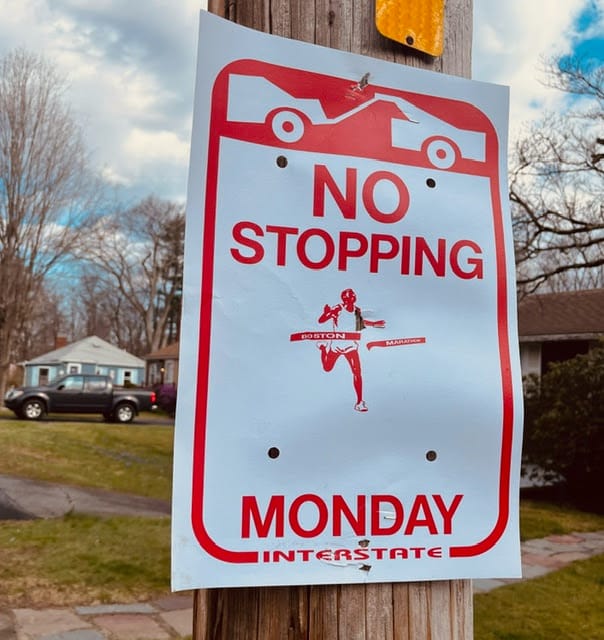
Now, the Boston Marathon is a logistical clusterfuck through 7 cities that ends in an 8th city. That 8th city also happens to be the definition of a clusterfuck the other 364 days of the year. If my name was Will Hunting, I’d call it a Clusterfuck to the eighth power. There’s even a quasi-legitimate holiday commemorating the Battles of Lexington and Concord to allow those 500,000 people to skip work without being too obvious.
But I’m getting sidetracked, back to the vehicles! Before 30,000 athletes can clog up traffic for a day, all the roads involved need to be shut down and in many places, barricaded. This is where those snowplow and garbage trucks come in handy. Since they’re massive, they're perfect of for blocking streets that abut the course. Once the course is closed, all those athletes need to get to a starting line. A starting like that is conveniently located in a town with 12 parking spots that's 26.2 miles away from the finish. This is where those buses and moving trucks come in. Athletes are bussed to the start in waves corresponding to their start times. Additionally, wheelchair, hand cycle, and duo athlete’s equipment is loaded into moving trucks by us friendly Boston Marathon Bike Spotters…usually sometime around 5:30AM.

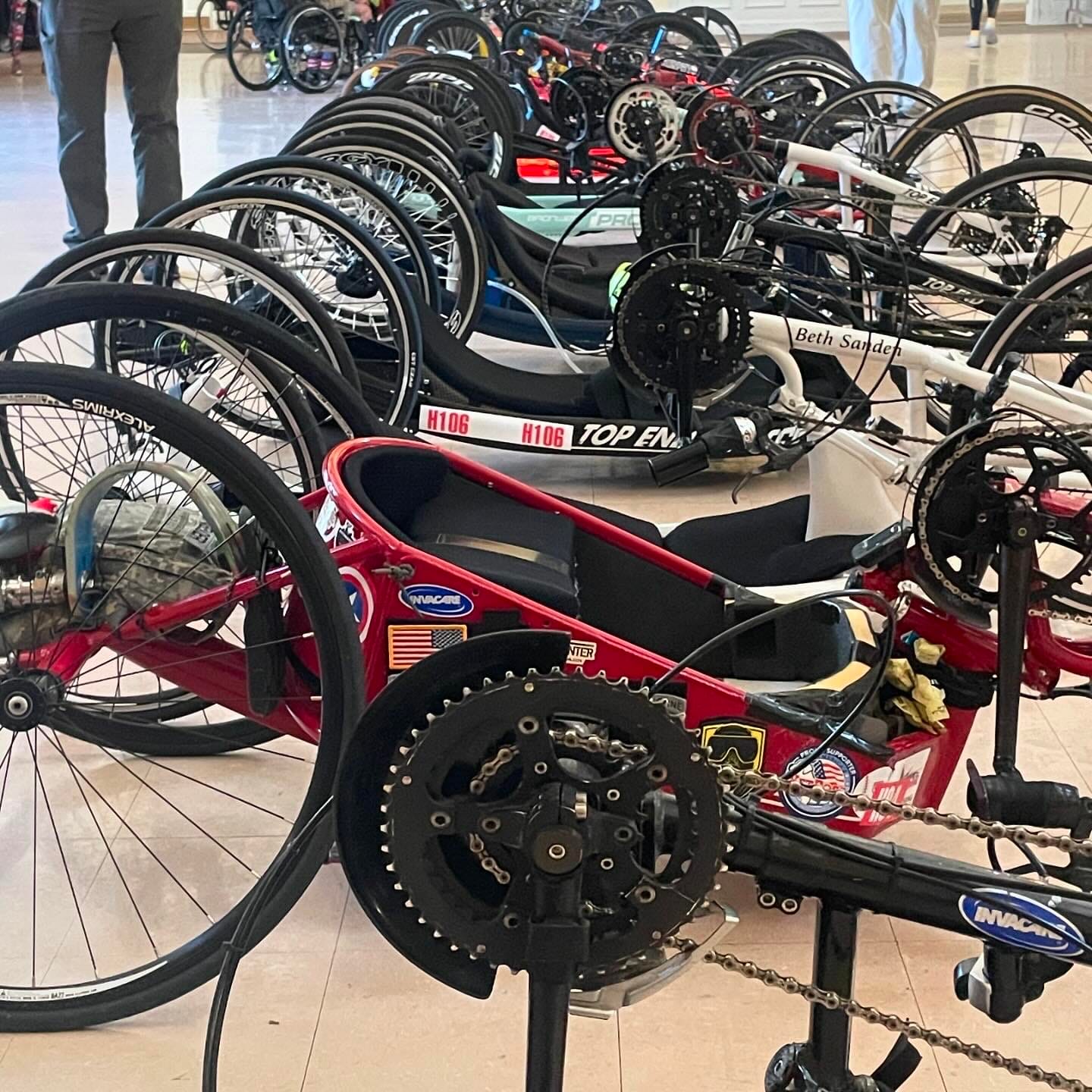
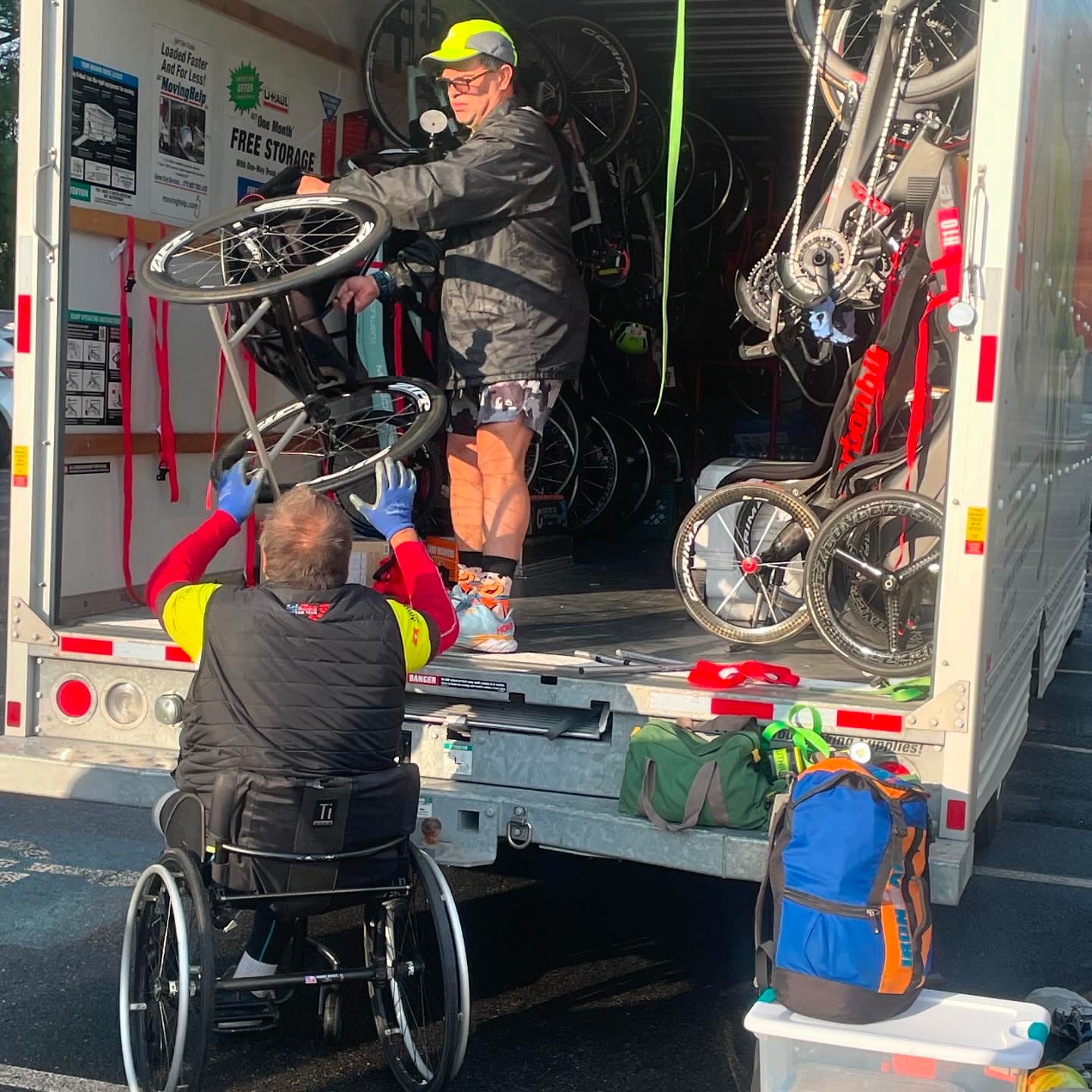
A trusty coach bus delivers us to the starting line in Hopkinton. Then we unload the precious cargo of wheelchairs and handcyles.
After a police escort to the start and unloading everyone/everything, things gets serious. At 9:00AM the F35’s fly over during the national anthem at the starting line. Time for the athletes get down to business. First to go are push-rim wheelchairs because those athletes can really haul the mail. I’m talking a 20+MPH average for the winner. Twenty five minutes later, the hand cycles start along with duos of able body athletes and disabled athletes in special wheelchairs. This is a category pioneered by the late, great father-son team of Dick and Rick Hoyt. It just might be my favorite division to watch. At 9:37AM the elite men get going with the elite women following 10 minutes behind. At 9:50 the Para Athlete Division kicks off, marking the end of the initial wave. At 10:00AM, the rest of the world starts and it's literally runners as far as the eye can for the rest of the day.
Being the oldest and most prestigious marathon on the calendar, media coverage is crazy. Helicopters are seemingly circling everywhere above the initial wave as they race down the course. Ahead of the leaders of each division is a slew of police motorcycles plus a 1 ton pickup with a huge gimbal mounted camera and a huge clock display. All of that gear is powered by generators in a basket mounted up front. This results in a huge, heavy vehicle with crappy visibility in proximity of some of the world’s best athletes. This is where my friends and I on our bikes come in.
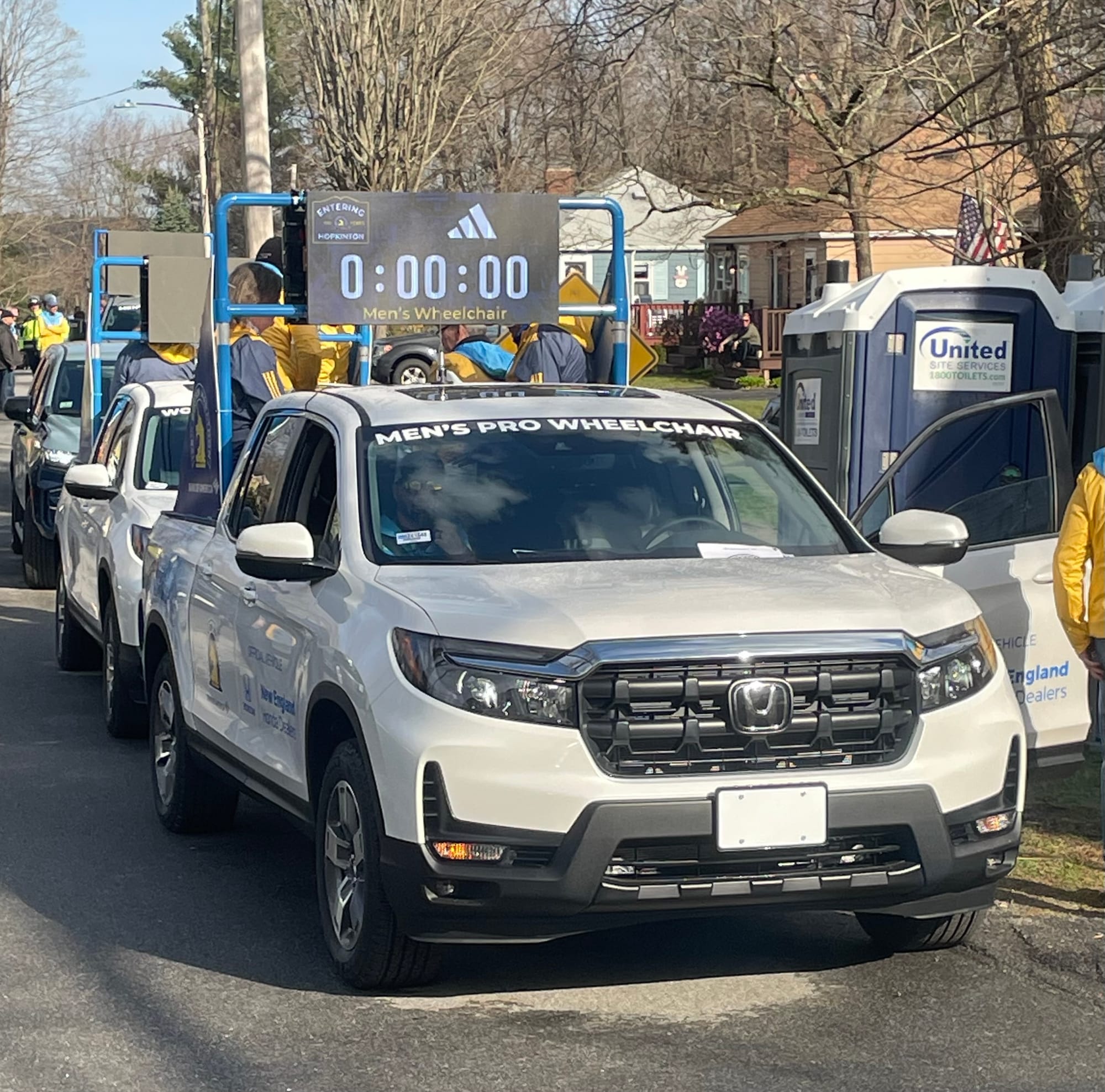
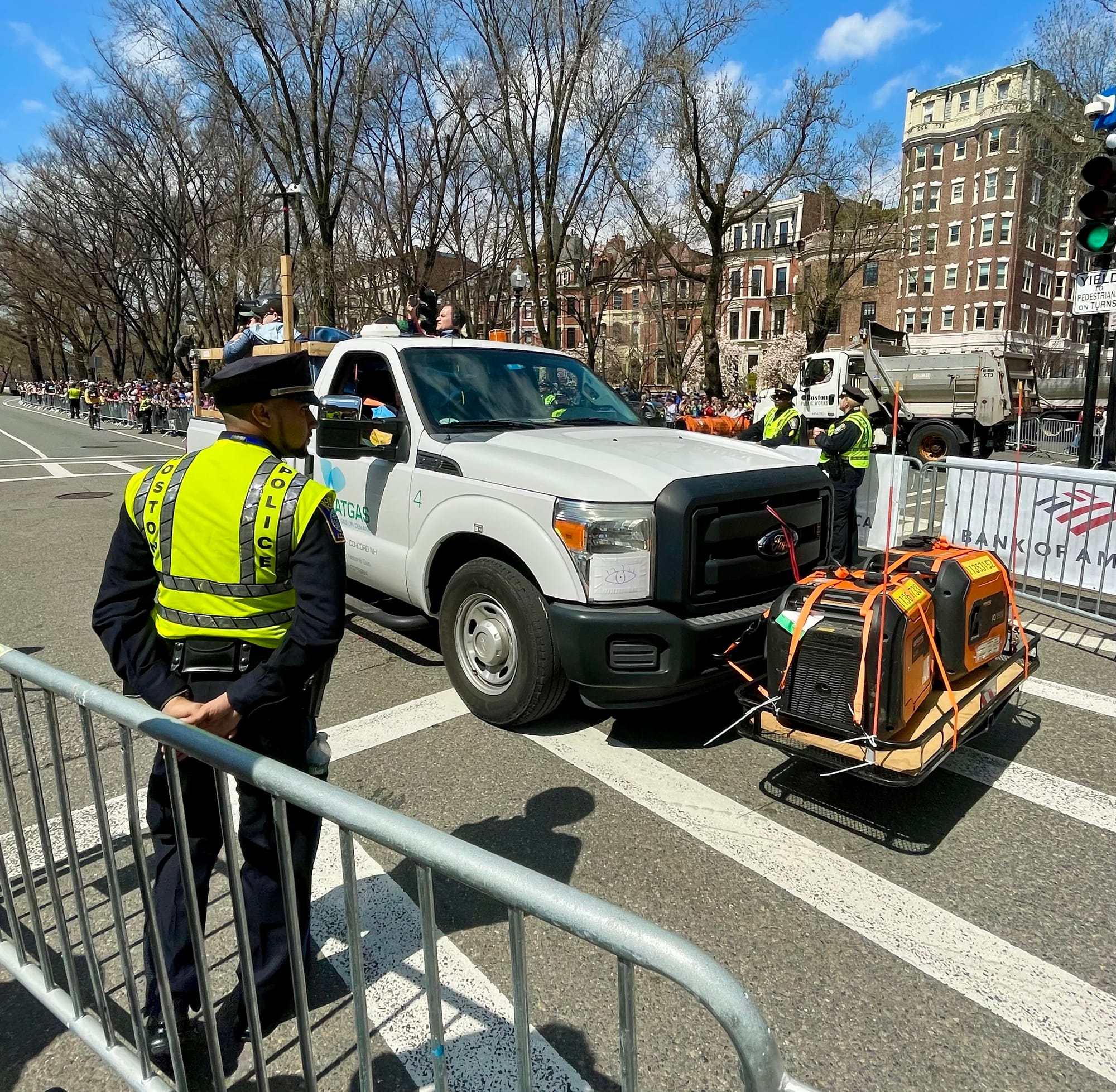
The Men's Pro Wheelchair timing truck at the start. For the computer nerds out there, the screen is run by a Raspberry Pi. The Ford F350 on the right is a media truck with a hard to see gimbal mounted camera in back.
Inevitably, the leaders of a division in the initial wave catch slower athletes from divisions ahead of them. With a $1,137,000 purse on the line nobody wants their race impeded or to get run over by a camera truck. It’s my job to ride my bike along the course acting as a spotter to warn athletes that they are about to be passed by faster athletes and media trucks. I've got to get their attention and direct them toward the side of the course, which can be s bit tricky. Since the Boston Marathon has many downhills, it's also our job to be sure wheelchairs and hand cycles going downhill pass others safely. It's a very smooth process in practice. It keeps everyone safe and ensures the top contenders can race unimpeded.
Typically after a few miles of coasting, I find myself sprinting frantically from one athlete to the next. Sometimes its a 20 second sprint, sometimes it’s a 5 minute time trial, but variety is the spice of (training) life. Inside the final mile, my job starts to wind down because most of the passing has happened. Here the roar of the crowd here never stops, it's unlike any sporting event I've ever been to. I pull off the course just before the finishing straight on Boylston Street after 25.8 miles of the course. Here, I get a front row seat to the majority of the top athletes making their way to the finish.
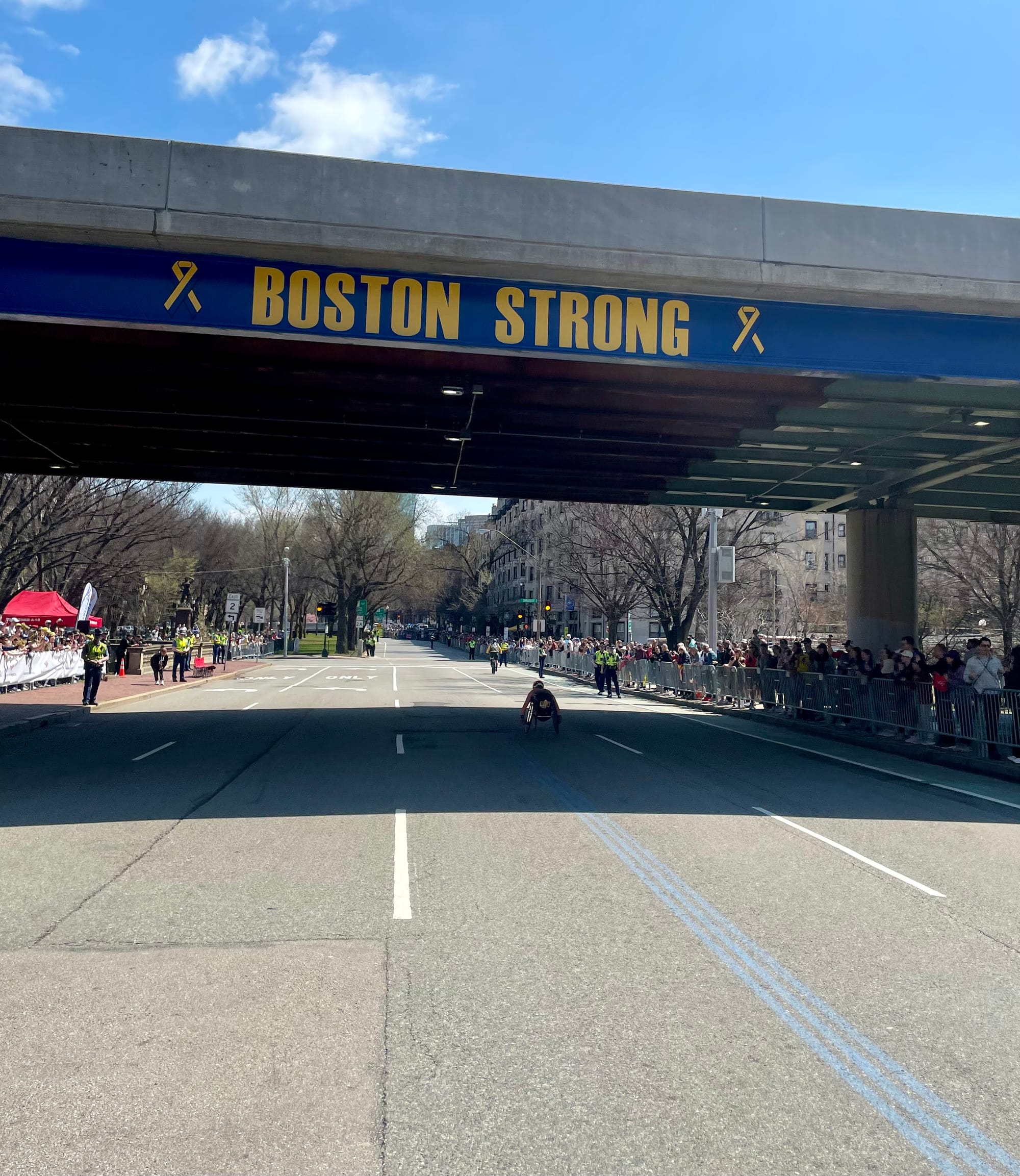
It’s a wild day with wild logistics. I’m lucky to be a microscopic cog in the massive machine that is the Boston Marathon each year. I doubt I’ll ever run a marathon, let alone the marathon on all marathons. I’m too much of a bike lover, but never say never. If you’re out quenching your thirst for Boston sports next Patriot’s Day, look for the guy on the old Cannondale with a crocodile bike horn.
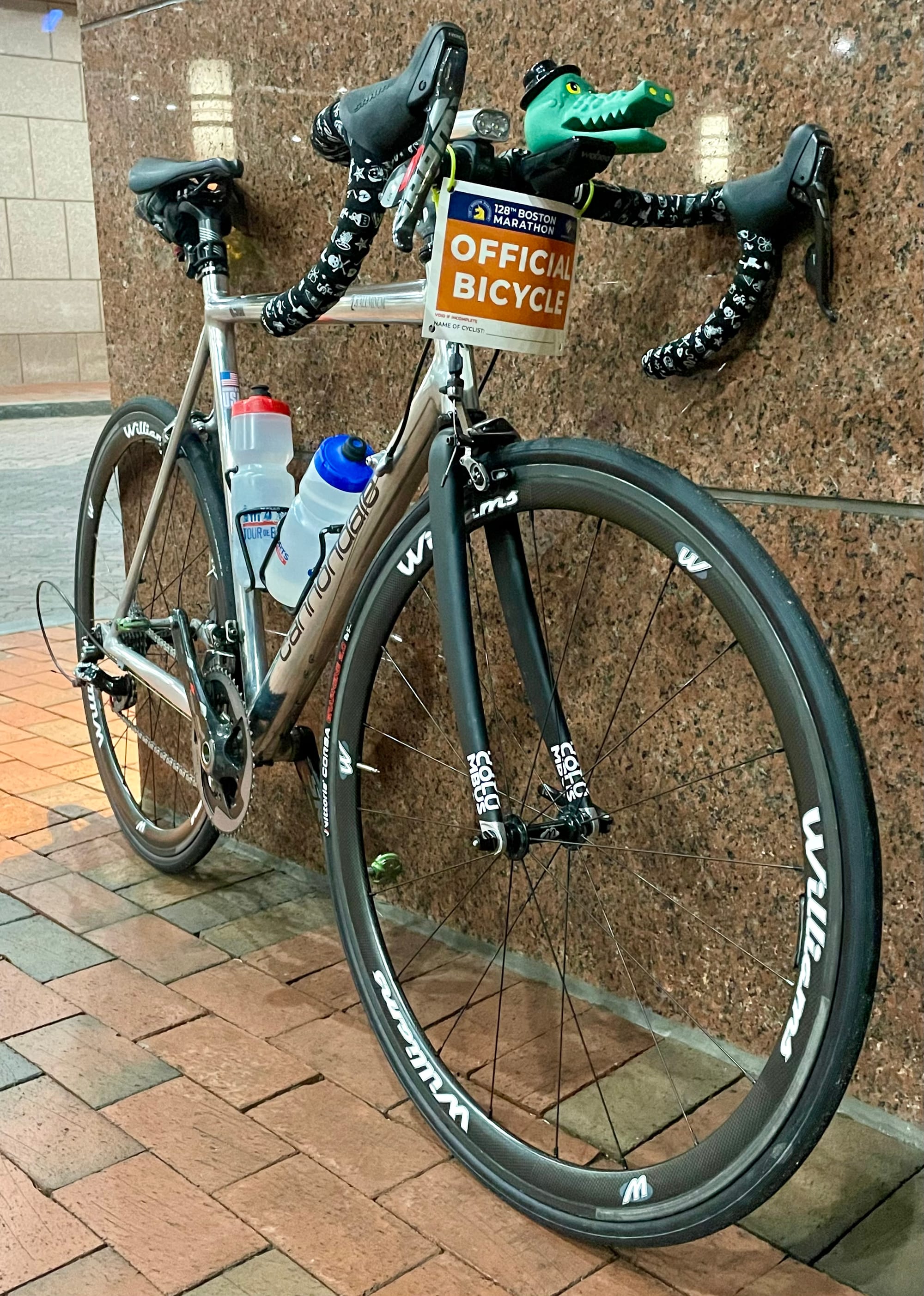
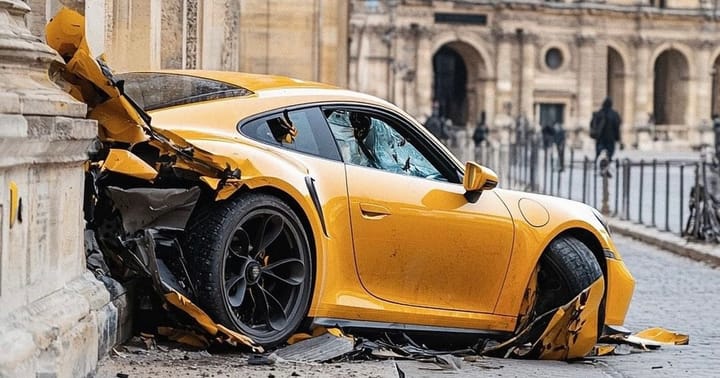
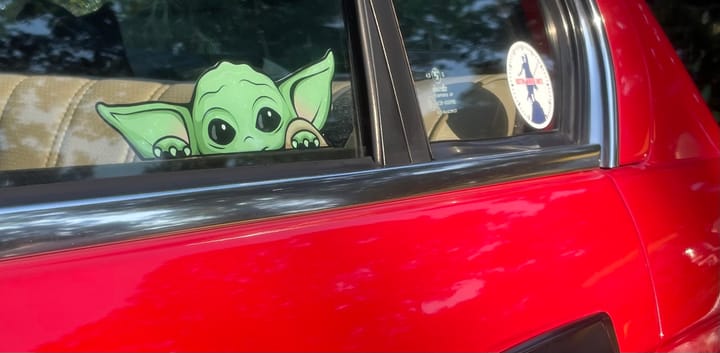
Comments ()